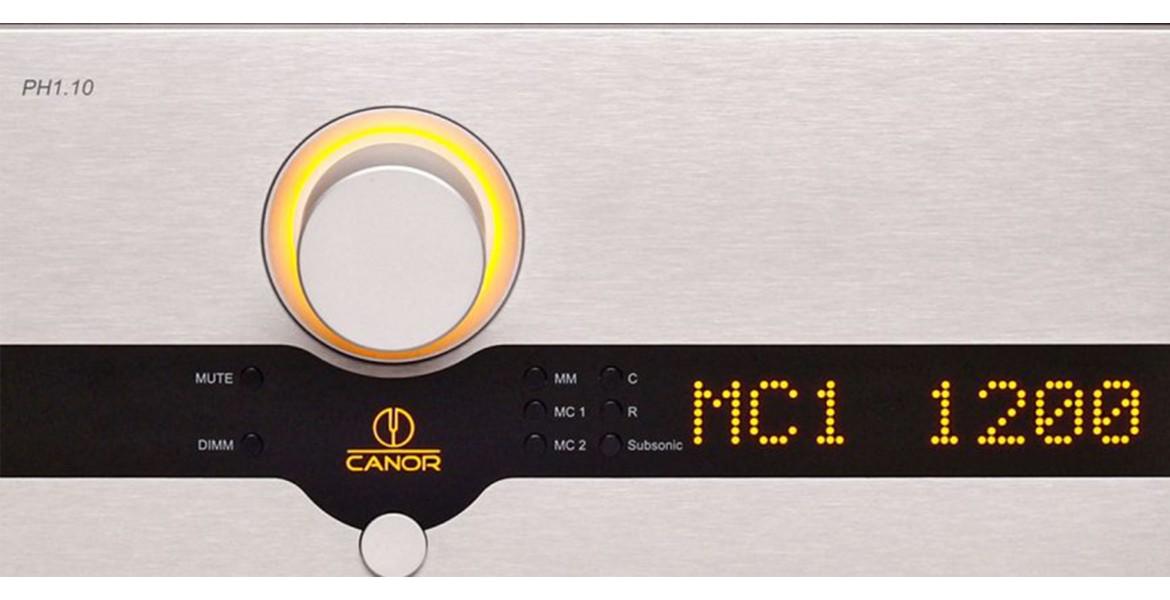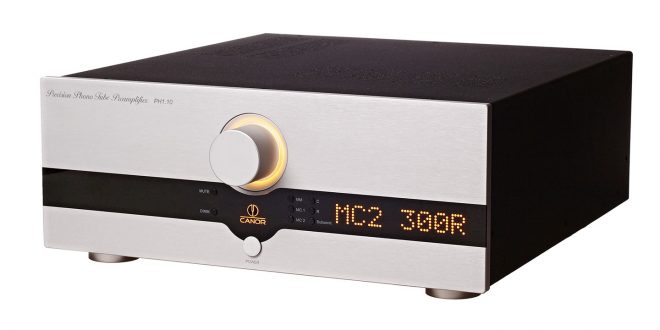
The Canor PH 1.10 is an MM and unrestricted MC-capable phono preamplifier, which is great to use, sounds great and does not require a single semiconductor in the signal path. That narrows the list of comparable offers considerably - and immediately aroused my desire for testing when I first came into contact with the brand at the HIGH END 2019 in Munich. That loudspeaker jet drive Karl-Heinz Fink used the Slovak electronics, which until then had been almost invisible on the German market, for the demonstration of his “Borg” floorstanding speaker had chosen, was an additional thick recommendation, almost a test command - especially since the things actually worked together wonderfully and the Canor people present appeared very competent and pleasantly unpretentious.
Founding chief developer Zdeňek Březovják and his colleagues can take it easy at Canor , a brand that has been around for 25 years. Because the Canor plant in the eastern Slovak city of Prešov is very well utilized even without the CD players, full and phono amplifiers from its own high-end line - for example with electronics development and production for the Austrian brand Pro-Ject and various others OEM customers. Testers and curious music fans have been discovering the name Canor and the associated tuning fork logo for years, discreetly hidden on the circuit boards of popular Pro-Ject devices, such as the likeable, sensationally award-winning Phono Box .
The structure of the Canor PH 1.10
The PH 1.10, on the other hand, carries the tuning fork proudly illuminated on the front panel. It is not a phono box, but a 17 kilo analog colossus, in which the technical fathers of the phono box unrestrainedly realized their idea of an ideal equalizer preamplifier. Only at the very end, it seems, did someone calculate the thing and come up with 5,500 euros. Just as much as the matching tube integrated amplifier AI 1.10. Which I would have liked to test together with the PH 1.10 if it had been available - Canor is currently struggling to cope with the demand. Phono and integrated amplifiers at the same price, so effectively doubling the price for analog fans? That would certainly attract concerned marketing strategists in other companies. Canor probably doesn't have one.
What you can also guess from the fact that two of the brand's three integrated amplifier models cost exactly the same, look the same and have the same performance, but are technically fundamentally different. Experienced vinyl audiophiles, on the other hand, know that this budget distribution is not a gram too phono-heavy. And then Zdeňek too, at least that's how I imagine it, replied after a slow sip of excellent Slovak beer: "Well, it'll work just fine!"
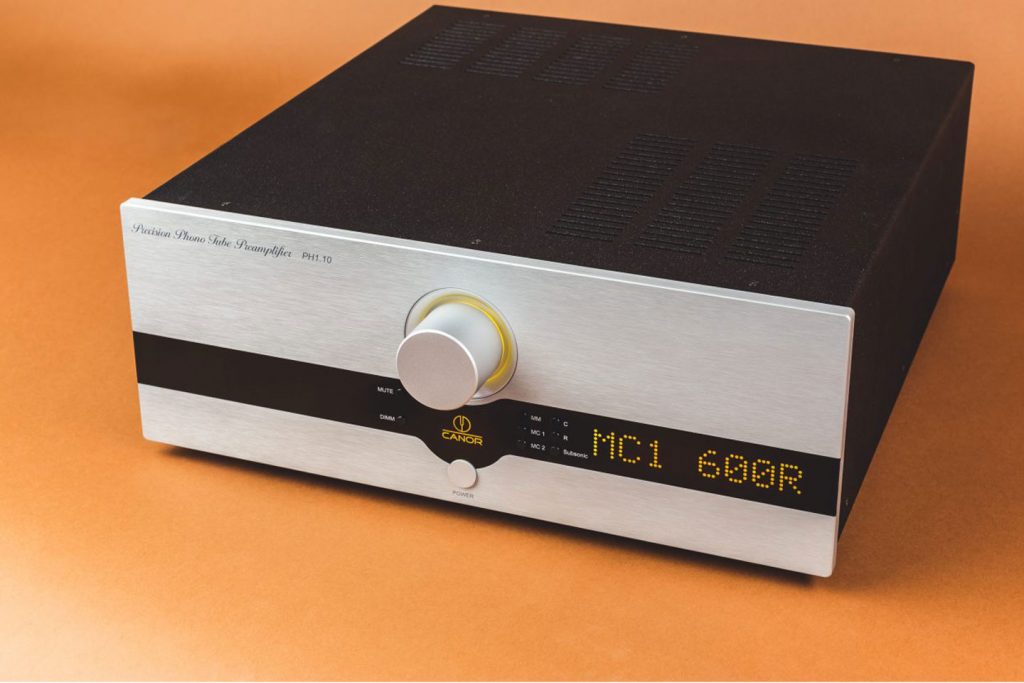
On the one hand clearly tube-loving, on the other hand very modern in its implementation and focused on perfect everyday and long-term suitability, the style of the Canor brand is somewhat reminiscent of Copland; The calm, elegant, never ostentatious design and the renouncement of the visible display of the tubes also reveal a certain kinship with the Scandinavian brand. The illuminated tuning fork logo, the distinctive central rotary knob and the huge yellow dot matrix display complement each other to create an unmistakable Canor look, which is also so convincing because the devices are perfectly processed.
The rotary knob, for example, is made of solid aluminum and is mounted on ball bearings in the thick aluminum front panel. The housing is not made of aluminum, but of two millimeter thick, welded and powder-coated sheet steel, which is internally divided into several parts: the power supply unit is housed in the left third, a small chamber for the control and display electronics is separated at the front right. The rest of the space is taken up by two separate, identical circuit boards, each of which houses a complete mono amplifier branch. The PH 1.10 employs a total of nine tubes, all of them by Electro-Harmonix from current Russian production.
Number one is a rectifier tube called the 6CA4EH , which is responsible for the anode voltage of the remaining eight tubes. These are low-noise tension grid double triodes of the type 6922EH. So, believe it or not, we have eight triode systems per channel to amplify MM signals, straighten the RIAA curve again (which happens here in a purely passive network) - and, last but not least, to form a symmetrical output stage that is extremely low-impedance for tube ratios.
With its 100Ω output resistance, the Canor PH 1.10 does not differ in practice from high-quality transistor colleagues; he drives long stretches of the simplest standard cable just as easily and sound neutral as esoteric noble strings with a physically absurd structure.
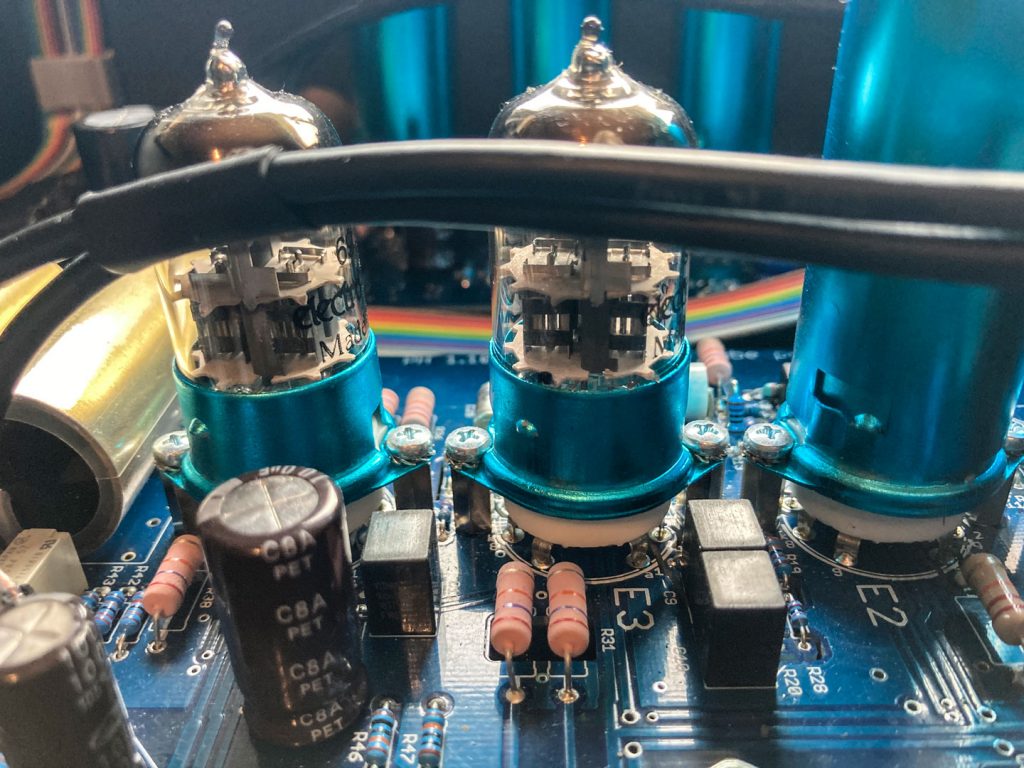
The Canor is ahead of most transistor constructions in terms of overload resistance and maximum output voltage - and this is an important factor in everyday audiophile analogue life. Because unlike in the digital world, where source devices somehow output 2 volts at full level, there is no exact standard for turntables: MC cartridges with an IEC measuring plate have output voltages between 0.0001 and 0.001 volts, depending on the design. We find a similar range, only shifted up by a power of ten, in MM and high-output MC systems.
In addition, there is no defined “0dB” reference level on the sound carrier side: what counts as full modulation on the recordings is not achieved by one album, and possibly far exceeded by another. In the phono world, the input signal that the preamp receives varies considerably. Accordingly, you need as wide a work area as possible, in which, on the one hand, very loud combinations can unfold completely freely, far from any limits, and, on the other hand, very quiet systems find a sufficient signal-to-noise ratio. And this is exactly the balancing act that the tubular eight-cylinder from Slovakia performs with ease.
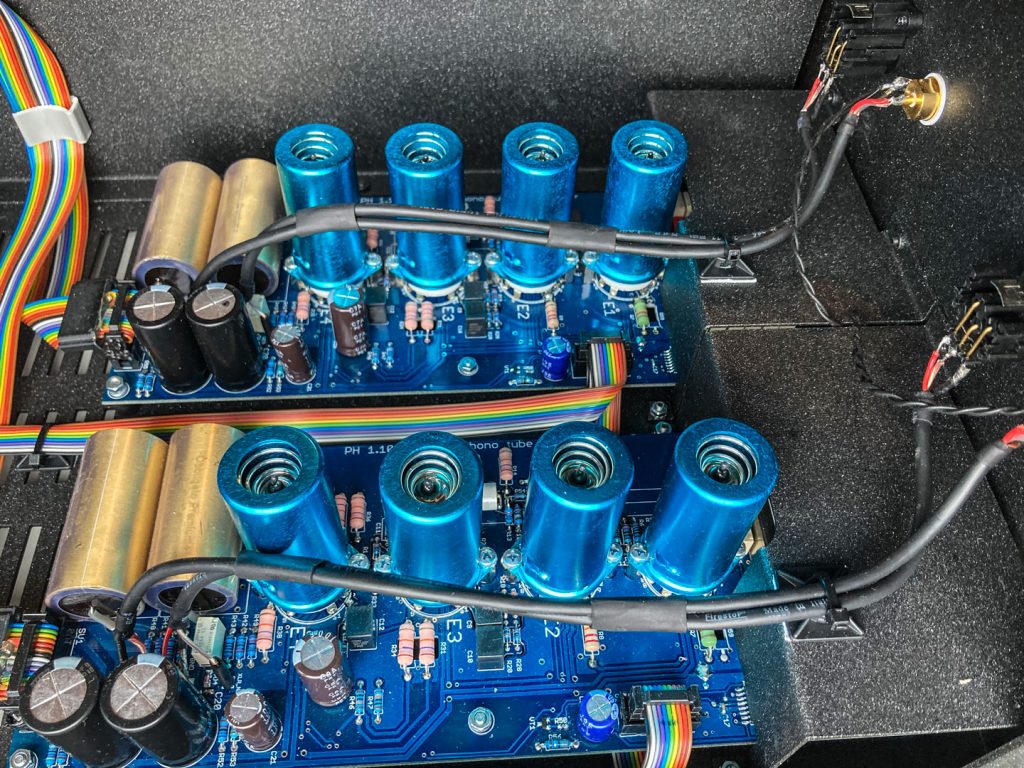
In order to keep the noise at a safe distance even with MC, the Canor gains the additional gain of around 30 dB necessary for these systems, not with active components, but like most good tube phonos with input transformers. Like a transmission gear for electrons, these specialized small transformers convert tiny audio AC voltages into correspondingly larger ones, whereby the transmission factor is given by the turns ratio of the secondary (i.e. output) to the primary winding of the transformer.
However, energy cannot just arise out of nowhere, which is why the product of current and voltage must remain constant. So the increase in voltage is offset by a proportional decrease in the current, but this does not have any negative effects on the high-resistance MM input that follows the transformer.
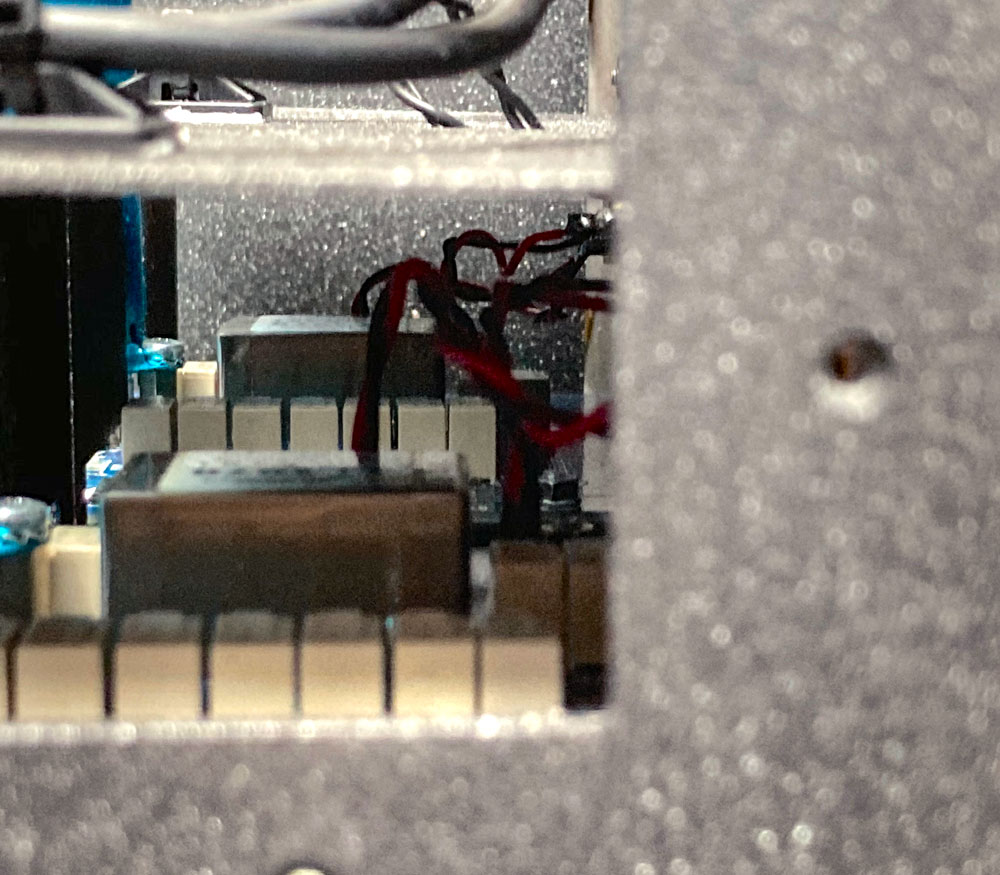
Transformers actually only have a disadvantageous effect on the production costs, because really linear, broadband and low-distortion audio transformers can only be created with experience, time and materials that are difficult to find. Canor doesn't do the winding itself, but gets its transformers, clad in hum-proof MuMetall, from the Swedish specialist Lundahl - and pays them 50 to 100 times what it would have cost to simply apply the same function to two decent OP-Amp-ICs .
Anyone who has ever heard a quiet MC system on a correctly adapted transformer knows why Canor probably didn't think for a second about saving these components: The decisive first voltage rise from the dark microvolt MC Mariana Trench in something clearer MM fields are not only low-noise for the music signal, but also completely noise-free.
The signal-to-noise ratio in MC mode is therefore only 4dB below the MM value in spite of the much higher amplification: around 70 dB - this is an excellent value for tube phono, and the Canor then also behaved in the hearing test with systems of any output voltage and construction completely inconspicuous.
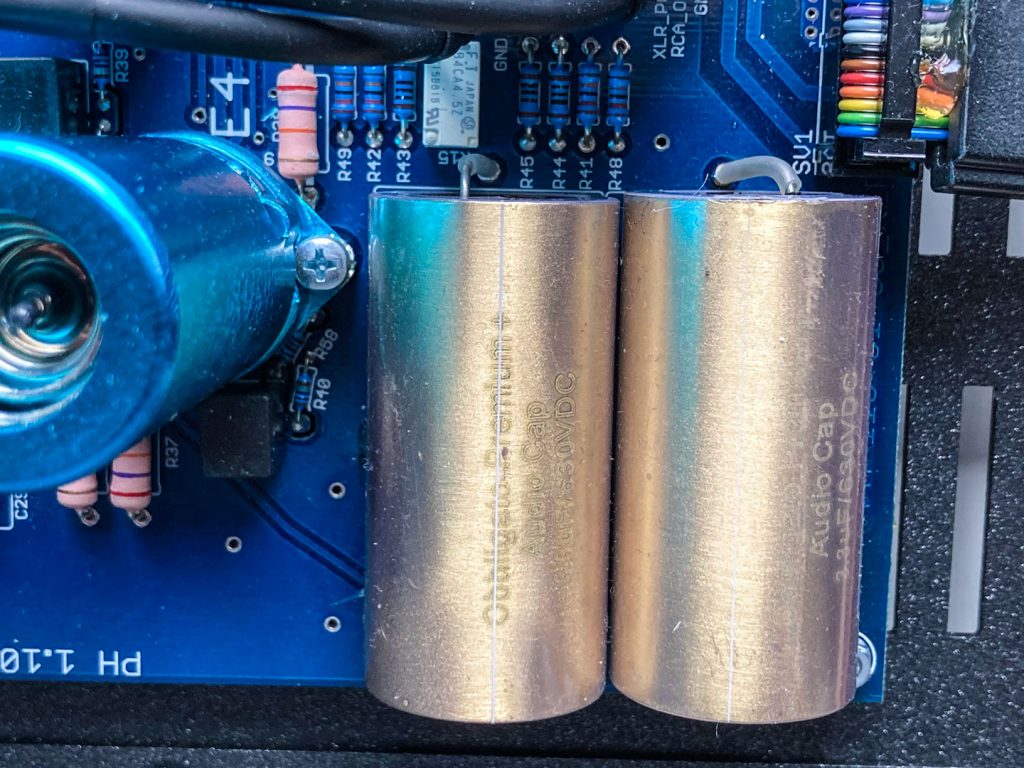
The amplification (or rather the transmission ratio) of the transformers can be switched via a relay interlocking that selects the appropriate primary and secondary windings of the complex nested transformers: If the input selector is set to "MC1", there is already a high 70 dB total gain , “MC2” even offers 76 dB and is therefore also suitable for very quiet systems such as an Ortofon SPU or Audio-Technica ART9XA .
The MM input is designed for 48 dB gain (which is a relatively high factor for this type of system) and has its own pair of sockets. Owners of two turntables or a two-armed drive can therefore connect both and switch between them as long as one of them is MC and the other MM.
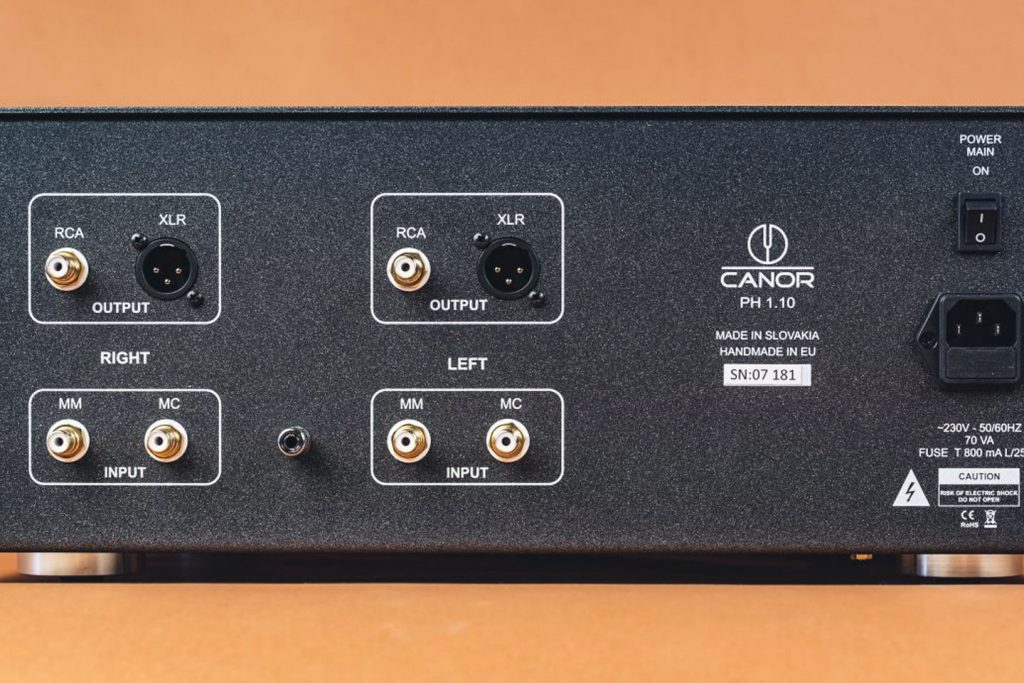
The inputs can also be fine-tuned to the system being used conveniently via relays, with clear text feedback on the dot matrix display that cannot be overlooked. The selection is made either with the thick rotary knob or with two small, actually completely redundant touch buttons. With MM, the very low basic input capacity of 50 picofarads can be increased in seven steps to up to 840 picofarads (which, however, rarely makes sense), with MC there are again eight adjustment levels, but now for the terminating resistor.
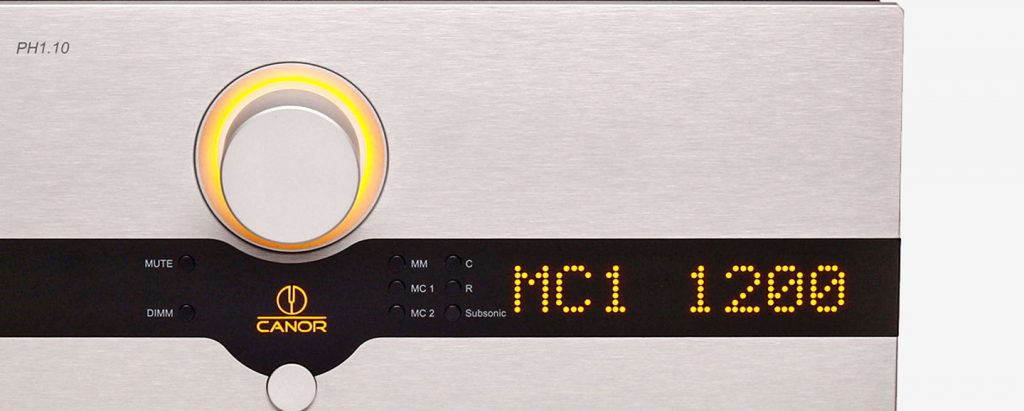
Since this is done by connecting resistors in parallel on the secondary side of the input transformer, the actual resistance that the system “sees” is also influenced by the gain setting of the transformer. With MC1, the options range from 10 to 1,200 ohms, the extra long gear ratio MC2 turns it into 2 to 300 ohms - which is also useful because extremely quiet MC systems are often low-ohms and prefer correspondingly smaller terminating resistors.
The hearing test
I heard the PH 1.10 with the said extra quiet MCs as well as with normal loud MCs and with magnet systems. Specifically, it came to the train: The Linn Klyde (0.15mV, 5Ω) on a Linn LP12 / Lingo 2 / Kore / Ekos 1, a Denon DL-103R (0.25 mV / 14Ω) on the Funk Firm Super Deck Grande with F512 Tonearm, the Thorens SPU TD 124 (0.5mV, 2Ω (!)) On the brand new Thorens TD 124 DD (test will follow soon), a Lyra Delos (0.6mV, 6Ω) on the SME Model 10, and as MM System finally a Nagaoka MP-150 on the Technics SL-1200 GR . In retrospect, the large selection would not have been absolutely necessary, because the fact that the Canor is an enormously large, powerful and dynamic sounding phono preamp was beyond doubt after just a few pages with the Thorens.
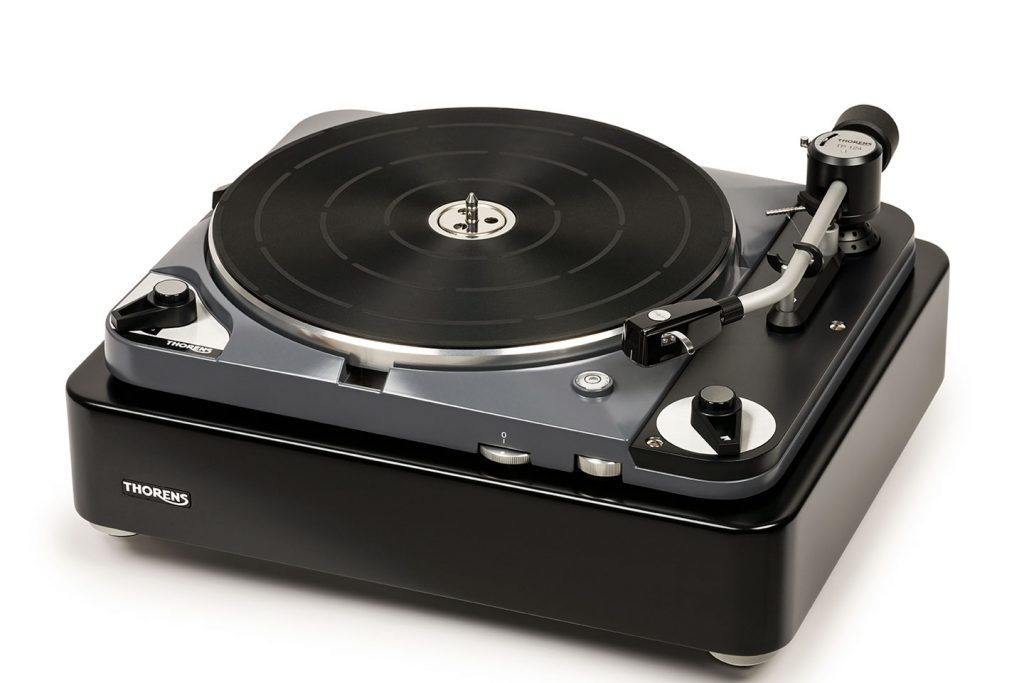
The first bars, which the needle brought to light from Matt Berninger's solo album Serpentine Prison , demonstrated the superiority of the PH 1.10 as clearly as if jumping from one image to the next with a slide projector. Superiority over whom? Not a 79 euro phono box, at least, but one of my absolute favorites in the role of the phono preamp: The Rike Audio Natalija I, who is also fully equipped with tubes and equally blessed with Lundahl transformers.
The German device - now on the market as Mk III, but still in the original version for me - combines unbelievable subtlety with gripping dynamic drive, gives the rock ballads of the national singer a grippy, rhythmically precise presence. Natalija (or she?) Is a tough opponent of hearing tests, who has so far won most of the comparisons with ease. Not so with the Canor, who portrayed Serpentine Prison just as grippy and vital, but zoomed in on the music even larger and more expansive. With only minor differences in the tonal characteristics - both preamps behave neutrally in the best sense of the word - the Canor can be recognized immediately by its even more expansive dynamic range and size.
Even the Linn Uphorik, which has long been a benchmark for me, was nowhere near the substance and authority of the Canor. Even the fantastic Naim SuperLine (with Hi-Cap power supply) got the short end of the line in a direct comparison - albeit a bit. The Canor PH. 1.10 simply has the larger color palette. Now would be the ideal opportunity to rummage through a phono part from Audio Research for comparison purposes. Because I had to think of AR spontaneously when I heard the Canor.
I have tested three or four models from this US manufacturer in the past few years, and all of them showed this sovereignly huge, high-torque sound, which even long listening tests did not expose as an effect adjustment, but which simply and naturally resulted from power, calmness and accuracy. The Canor was just as powerful, perhaps with a not quite as smooth and supple mid-high range as I remember it from Audio Research. At that time I was using a completely different system, but the comparison devices I used at the time were still available: The Roksan Reference Phono, for example, a kind of monster power supply with a built-in phono part and anything but squeamish when it comes to dynamics.
The nonchalance with which the Canor distanced this old warrior immediately betrayed: A great American has to run it, if at all. Which would then cost at least double the Canor. Because below 9,500 euros (for the PH-9) there is no longer a phono preamp with AR. That was not always so. I can very well remember great-sounding hybrid and even all-tube models under or around 5,000 euros. If you are looking for something like this, you will find it at Canor. Not in the USA, but in Prešov in Slovakia, near the border triangle with Hungary and the Ukraine.
ConclusionWeighty, powerful and agile like a tiger on the prowl: The Canor PH 1.10 is equally suitable for MM and MC systems and has huge reserves in terms of space and dynamics. Given the world-class sound and the excellent manufacturing quality, the price feels almost cheap.
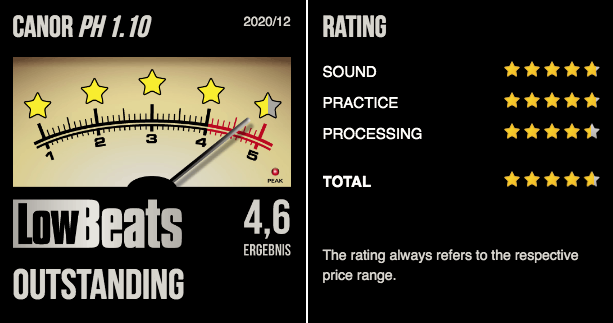
Comfortable and universal adaptation for MM and MC
Powerful, cable non-critical output stages
Very low-noise for a tube phono stage
Technical specifications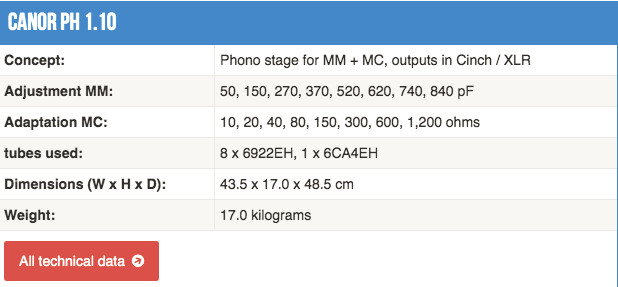
https://www.chameleonracks.gr/Canor%20Audio%20/Canor-Audio-Phono-1-10--en

